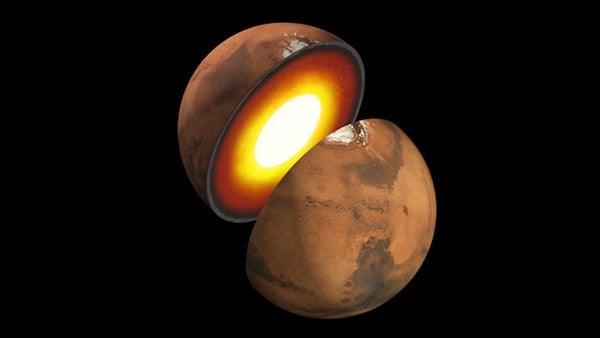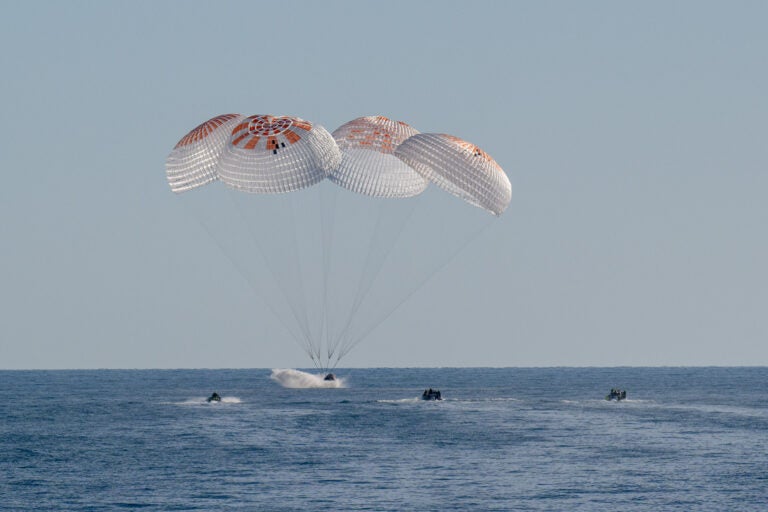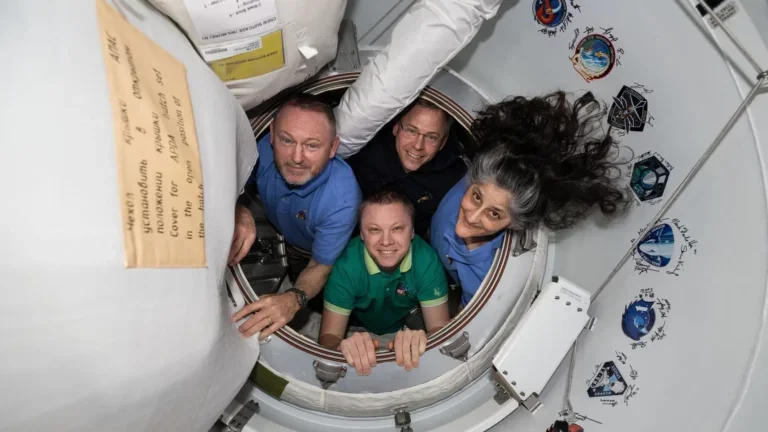“In some ways, InSight is like a scientific time machine that will bring back information about the earliest stages of Mars’ formation four-and-a-half billion years ago,” said InSight’s principle investigator, Bruce Banerdt of NASA’s Jet Propulsion Laboratory, in news release. “It will help us learn how rocky bodies form, including Earth, its moon, and even planets in other solar systems.”
InSight, which is set to launch as early as May, will use seismology (the study of quakes) to determine the makeup and structure of the Red Planet’s core, mantle, and crust. Currently, we know that Mars’ crust consists of lighter rocks and minerals, while heavier materials sank down to form its core and mantle. To learn more about its internal composition, the lander will use specialized instruments to observe seismic waves during “marsquakes.”
Seismic waves are produced when internal rocks crack or shift. They travel through the planet until the waves hit the surface, with their speeds depending on the type material they navigate through. InSight will use its highly sensitive seismometer, created by France’s Centre National d’Études Spatiales, to measure the speed, frequency, and size of these waves, giving insight (no pun intended) into the geologic material they pass through. The research team believes InSight will observe at least a few dozen quakes, but could potentially see hundreds during its mission.
InSight’s capabilities go far beyond seismology, though. Its Rotation and Interior Structure Experiment (RISE) will use a signal sent from Earth to track the lander’s location on the Martian surface. Variations in the signal, known as the Doppler Shift, show how much Mars wobbles while orbiting the Sun. Its movements during orbit will help researchers determine whether it has a liquid or solid core. The lander will also carry a thermal probe, developed by the German Aerospace Center, which can dig itself up to 16 feet (5 meters) below the surface to measure internal heat. Temperature, wind, and pressure sensors will also be aboard to help rule out any vibrations caused by weather.
Despite InSight’s prospective instruments and experiments, researchers are facing a challenge — a single, stationary lander will be solely responsible for monitoring seismic waves for the entire planet. On Earth, multiple locations pick up and track seismic waves, but on Mars, InSight will be acting alone.
Luckily, this isn’t NASA’s first time conducting seismic testing. The Apollo missions used seismometers to measure manmade vibrations on the Moon, as well as observe naturally occurring meteor impacts and moonquakes. The Viking landers also attempted seismology on Mars in the 1970s, but since the seismometers were placed on top of the landers, they ended up blowing in the wind and skewing the data.
“It was a handicapped experiment,” said Banerdt. “I joke that we didn’t do seismology on Mars — we did it three feet above Mars.”
Looking past NASA’s unsuccessful attempt and InSight’s lofty goals, the mission is off to a promising start. Currently, it’s wrapping up final testing at the Vandenberg Air Force Base in California, where its center of gravity, which needs to be precisely positioned to ensure a safe Martian landing, was successfully tested on March 28. If all goes according to plan, InSight will walk away from Mars with vital information about the planet’s interior composition, formation, and evolution. The data will not only help us better understand the Red Planet, but also planetary systems as a whole.










